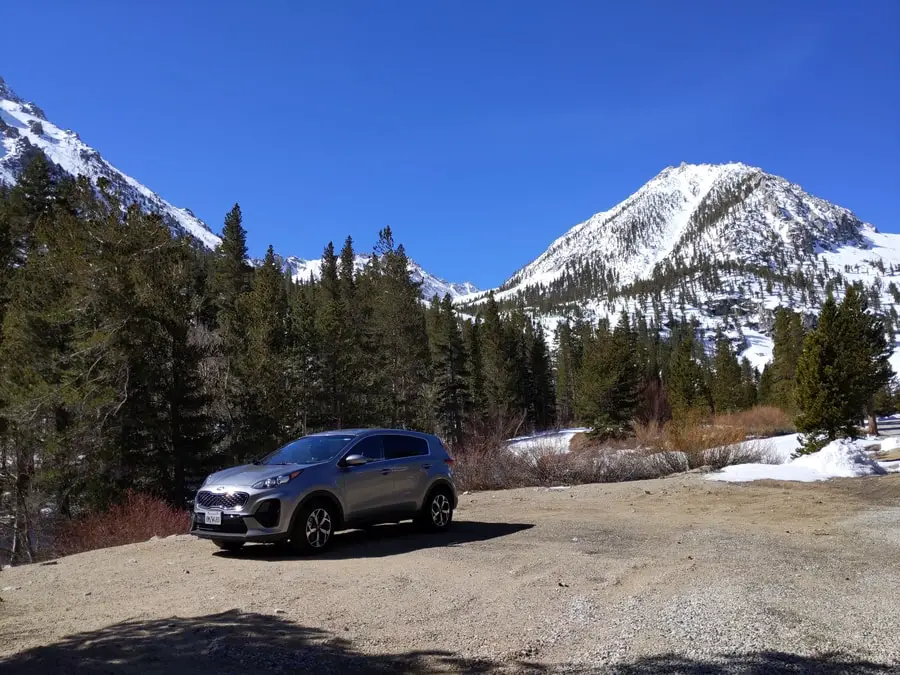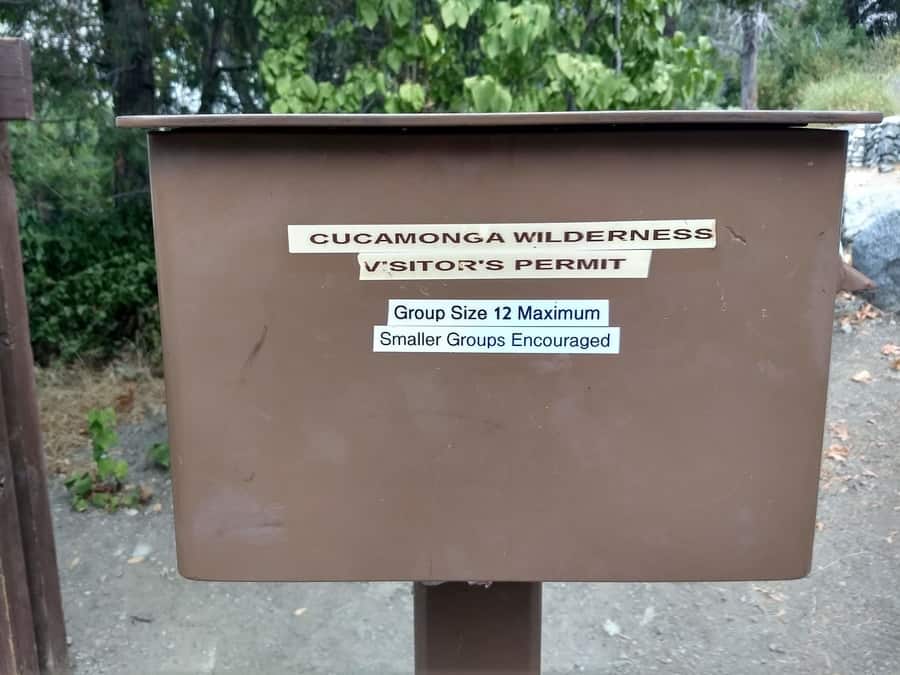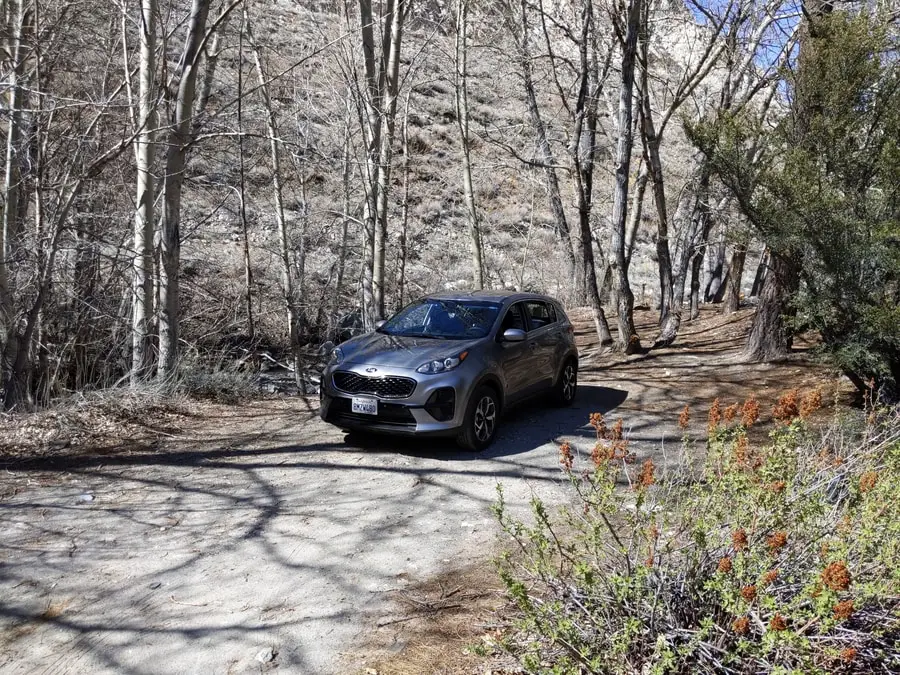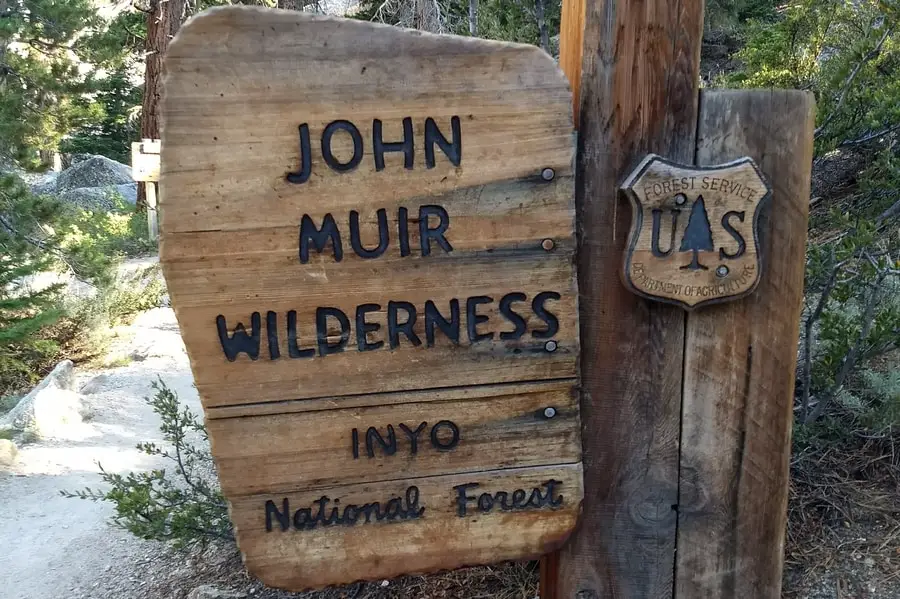
Camping is great, but sometimes you want to get away from it all because sometimes even campgrounds can be too crowded for your liking. You seek more solitude and freedom. National Forests are a wonderful place to find solitude and freedom. You might be wondering if you can technically sleep in your car in a National Forest. I have wondered the same thing and so I did some research and this is what I found:
So, can you sleep in your car in a National Forest? In most cases, you can sleep in your car in a National Forest, and if you are doing it outside of a designated campground then it is referred to as dispersed camping.
Most national forests have their own rules when it comes to dispersed camping, but a lot of the regulations are similar, try checking the National Forest’s website to see if there is a page on dispersed camping before you go. If you are going to be dispersed camping in your car then you need to acknowledge the extra responsibility that comes along with it. Sleeping in your car is just another way of setting up camp, but make sure you park in the right spot.
By the way, If you are in the market for a new tent, then you should click here to see the one I recommend on Amazon.
Common National Forest Dispersed Camping Rules

Rules will vary depending on which National Forest you will be visiting, but for the most part, they do share a lot of the same rules and regulations, or at least they have very similar ones. Always check the National Forest’s website that you are going to before you leave just to make sure there aren’t any other special rules in effect. You can easily do this by searching “Name National Forest Dispersed Camping” and you should have all that you need.
I wrote a similar article detailing many of the FREE camping options available in National Forests. Click here to check that article out!
The following are common rules usually shared by National Forests:
Permits
Some wilderness areas do required permits if you are going to be camping in them. If you are sleeping in your car, usually these wilderness areas are not accessible, but you should check just in case. Additionally, very large groups may require special permits to camp. The number I have seen is 75 or more, which I find hard to comprehend getting that many people to get together and go camping at the same time. Regardless, be sure to check and see if you need any permits for where you plan to go dispersed camping.
Campfires
Sometimes you will need to get a free permit in order to have a campfire in dispersed camping areas. Some forests have even stricter rules where no open fires are allowed at all outside of designated campgrounds. Typically you are good to go with camping stoves, but regular fires are a touchy subject. The conditions in National Forests can change in an instant and so can the regulations on fires.
During “high risk” times, the National Forests sometimes ban open fires to everyone, even in established campgrounds. Be sure to check the website for any updates, and usually when you are entering the forest, they have signs posted on current fire conditions. Be especially careful in knowing what the rules are for fires that day if you plan to have one while dispersed camping.
Location
You must be outside the boundaries of developed areas in the forest. This one is obvious and usually welcomed if you want to go dispersed camping anyway. How much distance you must be away from the developed areas can vary, but usually, it’s at least 1 mile from established campgrounds. They usually want you to be at least 150 feet from the roadway. The one-mile rule can also apply to the main highway running through the forest. In addition, be sure to stay at least 100 feet from any water source in order to prevent contamination and for your safety in case of flooding.
Fees
National Forests are typically free for entry. However, parking can be charged a nominal fee. Many of the Forests have daily passes or annual passes that can be purchased at a nearby ranger station. Also, the National Forests honor “America the Beautiful” passes and other similar all-encompassing passes. The closest National Forest to me has options of $5 per day or $30 for an annual pass, so the pricing is very fair.
Time Limits
Most National Forests impose a 14-day limit within a calendar year for you to disperse camp in one spot. If you want to stay longer than that, then you must move at least 5 miles away. Some more heavily trafficked Forests may impose shorter stay limits.
Responsibilities Of Sleeping In Your Car Outside Of A Campground
Minimizing Impact and “Leaving No Trace”
The National Forests teach guidelines to leave no trace. The point is to keep the forest as natural as possible. In order to minimize impact, try using a spot that looks like it has already been used before. That way you are not creating more damage to the environment than necessary. It really helps if you do not drive off-road. Driving off forest roads does a lot of damage to plants and wildlife.
Trash Disposal
There are no trash cans where you will be dispersed camping, so you must maintain all of your trash and carry it out with you when you leave the site. It is imperative to be respectful of the forest so that many more people after you can come and enjoy it the way you did.
Human Waste
Your waste must be buried in order to be properly disposed of. Six inches underground should be just enough, don’t forget to bring a good shovel. In some places, if you don’t have a shovel on you, you could technically be fined because you are unable to properly dispose of your waste. Another option could be to back it out in a doggy bag, but you don’t have to be that extreme.
Food and Water
There are no convenience stores where you will be staying. Bring enough food and water to last you for your entire trip. Maybe even some extra just in case. Water is especially important because there is no safe natural water to drink anymore. If you do plan on getting natural water then be sure to boil it thoroughly or run it through a really good filter like a life straw.
Animal Proofing
National Forests support an abundance of wildlife. Most of that wildlife has senses that are highly developed and that means they will be after your scented items. Do not let wild animals get into any of your food because it can make them sick and it can make them complacent around humans and that could be dangerous for both the animals and humans. Bears especially need to be prepared for, there are not dispersed bear boxes to safely keep your scented items, so you will need to find another way to keep your scented items safe.
Notice how I said scented items and not only food. Most animals have a sense of smell that is much more developed than we do, and everything we have that is scented can attract them. They might try to eat anything scented like soap and deodorant, so find out a good way to animal-proof all items with a scent. That’s why you need to have proper food storage in place. I wrote another article with 12 camping food storage tips that you need to know about!
Picking The Right Spot To Park And Disperse Camp

Minimize Impact
Getting the right spot to park mostly falls in line with following the rules. The most important one being minimizing the impact. Since you want to sleep in the car, that means you will be parking where you will be camping. Find an area with obvious vehicle usage or very low vegetation growth. Don’t drive off-road and over vegetation, you can and should keep your vehicle on the forest roads.
Site selection
Find a level spot as possible, as that will help you get a better night’s sleep. Don’t park in risky spots such as close to ant cliffs, in obvious flooding areas, or under an unstable tree. Don’t park right next to water because in case of flooding you could get stuck, plus it prevents contamination. Don’t park right off of the main highway, not only is it against the rules usually, it is dangerous due to nearby vehicle traffic.
All you really need to do is follow the rules and no matter where you decide to park, you will have a good experience sleeping in your car in a National Forest.
Know The Difference: National Forest VS National Park

While National Forests are very generous in allowing you to disperse camp, National Parks are usually not as generous. Most National Parks do not allow camping outside of developed campground areas. If you are going to a National Park, check their website to see if the Park offers dispersed camping. One such National Park that I have visited that does allow this is Death Valley, National Park.
You may also want to read another article I wrote that details where you can camp for FREE in nearly every National Park in the United States. Click here to read that article and find your next free National Park campsite!
Luckily, there are sometimes National Forest land or Beauru of Land Management (BLM) land that touches the outskirts of National Parks, and on those lands, you can disperse camp. So you could actually camp right outside of some National Parks and drive into them every day if you wanted to. Just be sure to know who manages what land you plan to park on and you should be just fine.
Here are their websites for more information on dispersed camping:
Conclusion
You can sleep in your car in most National Forests with no problem as long as you follow some basic rules. The rules are in place in order to protect you and to protect the natural beauty of the forest. Find the specific rules on which National Forest you will be visiting by going to their website. If you follow the rules, you will have a great dispersed camping experience and will want to come back again and again.
Related Questions
Can you sleep overnight in national parks?
Sleeping overnight in most National Parks is generally only allowed in designated camping areas and in backcountry areas with permits.
Can you sleep in National Park parking lots?
Most National Parks prohibit sleeping in your car in their parking lots. Overnight stays are generally only allowed in designated campgrounds and in the backcountry in most National Parks.
My Favorite Camping Gear
- Air Mattress: click here
 to check out my favorite on Amazon.
to check out my favorite on Amazon. - Tent: click here
 to see my favorite tent available on Amazon.
to see my favorite tent available on Amazon. - Sleeping Pad: click here
 to check out the one I love on Amazon.
to check out the one I love on Amazon. - Sleeping Bag: click here
 to see the one I recommend on Amazon.
to see the one I recommend on Amazon. - Camping Stove: click here
 to see the best camping stove on Amazon.
to see the best camping stove on Amazon.

